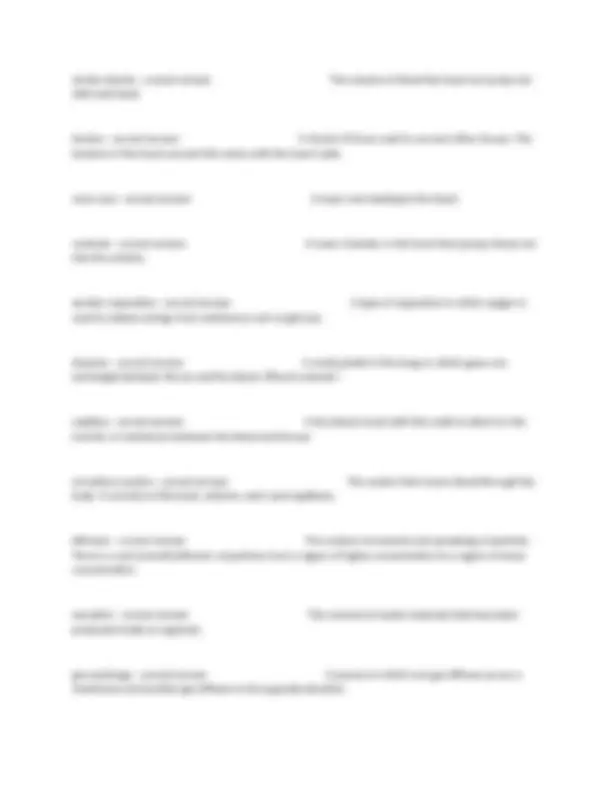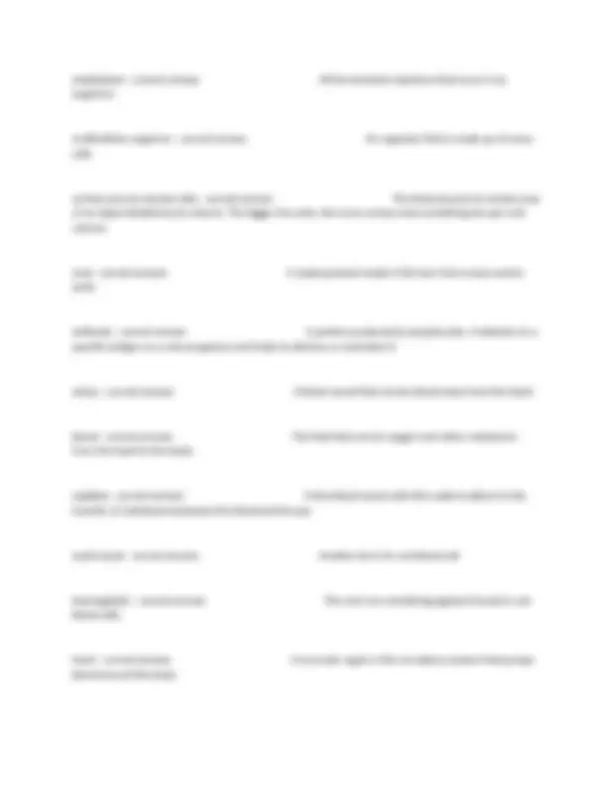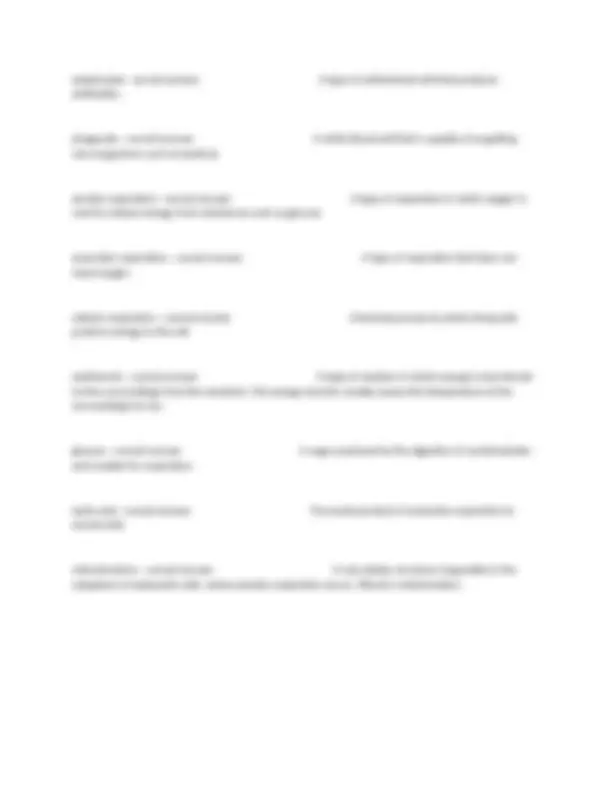





Study with the several resources on Docsity

Earn points by helping other students or get them with a premium plan


Prepare for your exams
Study with the several resources on Docsity

Earn points to download
Earn points by helping other students or get them with a premium plan
Community
Ask the community for help and clear up your study doubts
Discover the best universities in your country according to Docsity users
Free resources
Download our free guides on studying techniques, anxiety management strategies, and thesis advice from Docsity tutors
Edexcel GCSE Biology Questions And Answers Well Defined.
Typology: Exams
1 / 5

This page cannot be seen from the preview
Don't miss anything!




plasma - correct answer The straw-coloured liquid component of blood. platelet - correct answer Cell fragments that are important in the clotting mechanism of the blood. pulse - correct answer A shock wave caused by the contraction of the heart muscles, which travels through the walls of arteries leading from the heart. red blood cell - correct answer A biconcave disc containing haemoglobin that gives blood its red colour and carries oxygen around the body to the tissues. Also known as an erythrocyte. valve - correct answer A structure made of flaps of tissue that stops blood flowing in the wrong direction. vein - correct answer A blood vessel that transports blood towards the heart. white blood cell - correct answer A type of blood cell that forms part of the body's defence system against disease. There are many different types of white blood cell, including lymphocytes and phagocytes. aorta - correct answer The major artery leading away from the heart. atrium - correct answer An upper chamber in the heart that receives blood from the veins. (Plural is atria.) cardiac output - correct answer The volume of blood the heart can pump out in one minute. It is calculated using the equation: cardiac output = stroke volume × heart rate
chamber - correct answer An enclosed space. A human heart has four chambers. contract - correct answer To become smaller. When muscles contract, they shorten and become fatter. deoxygenated blood - correct answer Blood in which the red blood cells are only carrying small amounts of oxygen. Deoxygenated blood is a dark red colour. heart attack - correct answer When the heart stops pumping properly due to a lack of oxygen reaching part of it. heart rate - correct answer The number of heart beats in a unit of time, usually per minute (beats/min). heart valve - correct answer A structure made of flaps of tissue between an atrium and a ventricle of the heart. The heart valve stops blood flowing in the wrong direction when the heart muscle contracts. impulse - correct answer An electrical signal transmitted along a neurone. oxygenated blood - correct answer Blood in which the red blood cells are carrying large amounts of oxygen. Oxygenated blood is a bright red colour. pulmonary artery - correct answer An artery that carries deoxygenated blood from the right atrium to the lungs. pulmonary vein - correct answer A vein that carries oxygenated blood from the lungs to the left atrium. septum - correct answer A wall of tissue. The septum in the heart completely separates the chambers on the right from those on the left.
metabolism - correct answer All the chemical reactions that occur in an organism. multicellular organism - correct answer An organism that is made up of many cells. surface area to volume ratio - correct answer The total amount of surface area of an object divided by its volume. The bigger the ratio, the more surface area something has per unit volume. urea - correct answer A waste product made in the liver from excess amino acids. antibody - correct answer A protein produced by lymphocytes. It attaches to a specific antigen on a microorganism and helps to destroy or neutralise it. artery - correct answer A blood vessel that carries blood away from the heart. blood - correct answer The fluid that carries oxygen and other substances from the heart to the body. capillary - correct answer A tiny blood vessel with thin walls to allow for the transfer of substances between the blood and tissues. erythrocyte - correct answer Another term for red blood cell. haemoglobin - correct answer The red, iron-containing pigment found in red blood cells. heart - correct answer A muscular organ in the circulatory system that pumps blood around the body.
lymphocyte - correct answer A type of white blood cell that produces antibodies. phagocyte - correct answer A white blood cell that is capable of engulfing microorganisms such as bacteria. aerobic respiration - correct answer A type of respiration in which oxygen is used to release energy from substances such as glucose. anaerobic respiration - correct answer A type of respiration that does not need oxygen. cellular respiration - correct answer Chemical process by which living cells produce energy in the cell. exothermic - correct answer A type of reaction in which energy is transferred to the surroundings from the reactants. This energy transfer usually causes the temperature of the surroundings to rise. glucose - correct answer A sugar produced by the digestion of carbohydrates and needed for respiration. lactic acid - correct answer The waste product of anaerobic respiration in animal cells. mitochondrion - correct answer A sub-cellular structure (organelle) in the cytoplasm of eukaryotic cells, where aerobic respiration occurs. (Plural is mitochondia.)